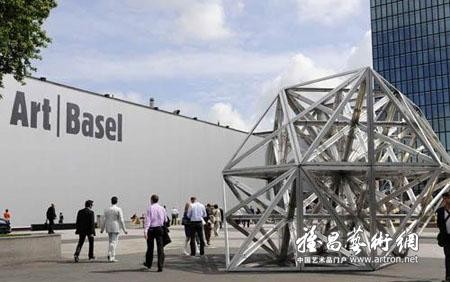
At Times of Crisis, Fairs should Take a more “curated” Approach
2009-06-17 14:15:16 Paco Barragán

The blurring of the boundaries between the art fair and the biennial or that type of international survey exhibition is almost historical: in 1895 Venetian mayor Ricardo Selvatico saw the first Venice Biennale as an opportunity to promote the city as an international meeting place; in 1955, curator Arnold Bode modelled Documenta in Kassel after the commercial 1913 Armory Show in New York, and hoped its first exhibition, “European Art of the Twentieth Century”, would be integrated into the infrastructure of the German Federation Horticultural Show. Decades later, the Arco art fair in Madrid started the “biennalisation” of the art fair with the creation of an accompanying curatorial programme and an intense international schedule of panels, conversations and discussions with major contemporary art figures such as Okwui Enwezor, Hans Ulrich-Obrist, Octavio Zaya and Barry Schwabsky—a model which since has been copied by the major art fairs. The result is the entangled and complicated dividing lines between the commercial art fair and “non-commercial” biennial.
Both Art Basel and its sister fair, Art Basel Miami Beach, have become known for their extensive roster of special projects, commissions, lectures and discussions. Increasingly other fairs are also turning to the curator—Frankfurt-based critic and curator Amanda Coulson at Volta (the Basel edition runs until 13 June), former Flash Art critic Andrea Bellini who now directs Turin’s art fair, Artissima (scheduled for 6-8 November), or curator Neville Wakefield at London’s Frieze Art Fair (scheduled for 15-18 October)—to inject curatorial values into the commercial fair. Slowly but progressively more curators are finding places in fair selection committees, partly stemming from a desire for “transparency” over the gallery selection process which can sometime draw criticism.
Meanwhile, we are witnessing a new development in the curatorial practice, with curators expanding from museums and academic institutions, towards a more commercial sphere. For curators, art fairs have become not only places of trade, but places for cultural experiences which economists Joseph Pine and James Gilmore have called the “Experience Economy”. This concept, developed in the late 1990s, states that businesses must constantly provide customers with fresh and new “experiences”. And as such, art fair directors increasingly come from an artistic rather than an entrepreneurial background, which in turn is a response to the emergence of increasingly knowledgeable art collectors.
It’s a common complaint that many fairs lack a “focus”. In this process of transformation the curator, together with the artist and the gallery owner, can provide new perspectives on contemporary art practices and trends and redefine the art fair artistically. The fair benefits from the prestige, know-how and contacts of the curator and, in exchange, the curator gets a new curatorial platform.
Whether conceiving special sections for the fair: Black Box at Arco, Art Statements at Art Basel; or curating special shows like Filip Luyckx’s “Ephemeral Fringes” at Art Brussels (April 2008) or Salima Hashmi’s “Desperately Seeking Paradise” at the 2008 edition of Art Dubai 2008; or by organising one-day thematic exhibitions using the art pieces on display at the fair as happens at “In the Spot” at Circa Puerto Rico; the curator can facilitate a certain narrative in a context where conception, selection, production, exhibition, inauguration and social interaction are all compressed into a period of between one and five days.
It is especially true that in times of economic crisis, commercial galleries and artists may be keen to participate in curated project rooms at art fairs providing a solo, more coherent, and arguably more attractive presentation of the artist’s work. Conversely, art fairs are challenging environments in terms of pressure on space and hectic installation schedules requiring a degree of speed and concentration that we curators are not always able to match. But that does not mean that we should not contribute and aspire to make art fairs more intellectually challenging: after all, for many people they offer a more democratic and less intimidating access to contemporary art that the environments in which most of us traditionally work. Isn’t the art fair similar to some degree similar to Malraux’s “Museum Without Walls”? Isn’t an art fair a “cultural house” that takes art from city to city?
(责任编辑:李丹丹)
注:本站上发表的所有内容,均为原作者的观点,不代表雅昌艺术网的立场,也不代表雅昌艺术网的价值判断。
 李铁夫冯钢百领衔 作为群体的早期粤籍留美艺术家
李铁夫冯钢百领衔 作为群体的早期粤籍留美艺术家 翟莫梵:绘画少年的广阔天空
翟莫梵:绘画少年的广阔天空 OCAT上海馆:参与构建上海艺术生态的十年
OCAT上海馆:参与构建上海艺术生态的十年 春雨斋主人房茂梁:“好运气”的90后古玩经纪人
春雨斋主人房茂梁:“好运气”的90后古玩经纪人
全部评论 (0)